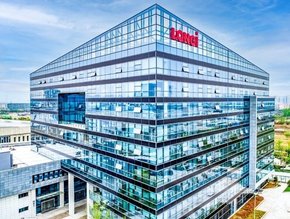Why the M&A route to Gen AI could be the best solution

You don’t need a survey to tell you Gen AI is top of the business agenda. It has been a year since ChatGPT burst onto the scene (creators OpenAI launched it on 30 November 2022) and it quickly transitioned from gimmick to a genie in the bottle for business.
Suddenly, CEOs and CTOs were digging out their cheque books, clamouring to take advantage of the new technology and not get left behind – even if they were not entirely sure what to do with it. A year on, that situation remains, according to the latest EY CEO Outlook Pulse survey.
The quarterly survey of 1,200 global CEOs reflects the difficulties and the urgency that CEOs find themselves acting under when it comes to Gen AI. While more than two-thirds (70%) see the need to act quickly on GenAI to avoid missing out, 68% say they are being held back due to uncertainty around the pace of change.
Andrea Guerzoni, EY Global VC for Strategy and Transactions, says CEOs are making bold investments in the technology to future-proof their organisations, but the “relentless hype” around artificial intelligence has clouded their view of the landscape.
“While CEOs agree their organisations need to act now on GenAI to avoid giving competitors a strategic advantage, they are also acutely aware of the uncertainty around GenAI,” Guerzoni tells Business Chief.
“That makes it challenging to develop and implement an effective AI strategy and move organisations up the AI maturity curve.
“In APAC, only 7% of CEOs think that their organisations are leading in this space. Although CEOs are at different stages of integrating AI into their business operations and strategies, the overall trend towards greater adoption and leveraging of AI capabilities is clear as virtually all CEOs (98%) are planning significant investments in Gen AI.”

For many CEOs, investing in generative AI means investing in the future of their organisation. The decision to invest (or not) is primarily a strategic one, says Guerzoni, and can depend on industry context, AI maturity, available resources and the specific problems the company is trying to solve.
For many, there is a strong case for the strategic use and investment in Gen AI, although the opportunities to create efficiencies and improve talent and skill developments are currently clearer than driving top-line growth.
“It is also crucial for CEOs to consider associated risks, ethical implications and the need for a robust risk management framework,” he says. “Formulating a balanced and well-thought-out AI strategy that aligns with the company's overall business objectives and risk appetite is key.”
The survey highlights some regional differences that set CEOs from the APAC region apart from their global counterparts. One of the most striking is the approach towards funding for these investments in AI.
While almost a quarter (23%) of global CEOs prefer raising new capital for their AI investments, only 15% of Asia-Pacific CEOs share this approach. Instead, 42% of Asia-Pacific CEOs indicated they will reallocate capital from other investment budgets and another 32% prefer to draw from their existing technology budgets.
Guerzoni says the differing approaches to funding reflects different capital market dynamics globally and where venture capital is more readily available.
Not only is the sheer rate of advancement a challenge for CEOs when it comes to devising their strategy – which impacts their ability to remain up-to-date with their knowledge and capabilities – but it is also hard to choose partners to work with.
“Of the CEOs surveyed, 67% reported that it has become harder to identify credible partners or acquisition targets, due to a sharp increase in companies claiming to be experienced in AI,” says Guerzoni. “This challenge can complicate the process of finding reliable assistance and collaboration in the AI landscape.”
The ability to find reliable, knowledgeable partners is essential, and Guerzoni argues that the APAC region could benefit more than most from the Gen AI opportunity.
“APAC could potentially benefit more given the region’s willingness to embrace and invest in AI, the technology-driven economies, and its vibrant AI start-up / venture ecosystem,” he says. “This is despite risks associated with the ‘fragmentation of AI’ between China and western countries, with China developing its own independent ecosystems.”
The region is on the rise – a fact backed up by the EY survey that shows the top five destinations companies are considering locating are China, Australia, India, Japan, and Singapore. Guerzoni is not surprised.
“In the last decade, the large and increasingly affluent population has grown, which translates to a huge consumer market,” he says. “APAC also has a young and skilled workforce which still has a relatively low-cost base for highly educated and dynamic talent.
“The region continues to show strong growth prospects and high digital adoption where countries like China, Japan, and Singapore are at the forefront of digital innovation, offering a vibrant ecosystem for businesses. It also still plays a critical role in global supply chains, so the region’s attractiveness and importance cannot be understated.”
With its vast and diverse population, the APAC region also offers large data sets that can be used to train and refine Gen AI models. This diversity can help in developing more robust and region-aware AI systems.
It’s not all positive news for APAC, however. Stagnant global growth, economic and geopolitical risks and the higher cost of capital are weighing on APAC deal sentiment. Overall, the appetite to pursue transactions remains robust, with 84% of APAC CEOs looking to M&A, divestments or joint ventures to gain the capabilities required to fast-track their growth ambitions.
“While the US has led a relative rebound in M&A this year, the tailwind for APAC is yet to arrive, as is reflected in our survey: 23% of APAC CEOs plan M&A over the next 12 months (compared to 56% in July 2023), substantially lower than the 56% of American CEOs,” states Guerzoni.
“CEOs need to assess their risk levels when it comes to technology and digital disruption – already 35% believe that it will have a huge impact on the organisation’s performance. Digital transformation can enhance operational efficiency, improve customer experience, enable new business models and drive competitive advantage.
“However, M&A should not be disregarded as a means of driving business growth. Strategic investments can provide a route to acquire unique capabilities – acquiring a tech-savvy organisation can provide an instant boost to a company's digital transformation efforts.”
With almost all CEOs in APAC planning to invest in Gen AI, the M&A route could yet provide the best solution, but with the technology evolving on a seemingly daily basis, it would be a bold CEO who backs such a move. However, with such game-changing gains at stake, fortune could indeed favour the brave.







